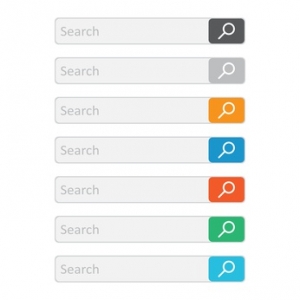The “Do’s and Don’ts” when searching clinical trials registers

Searching clinical trials registers is a “must have” in clinical research and evidence based medicine. The prospective registration of a clinical trial in a clinical trial register is a prerequisite for publication of its results according to the International Committee of Medical Journal Editors1. Furthermore, regulatory agencies such as the Food and Drug Administration (FDA) and the European Medicines Agency (EMA) require the registration of clinical trials in such registers prior to the first patient being enrolled. In addition, publication of main study findings in the respective registers is increasingly required.
Therefore, the most common registers are usually kept up to date and offer a tremendous source of information for patients, but also researchers, regulatory and reimbursement agencies. However, the different registers have their unique characteristics and there are several issues to be kept in mind when searching clinical trial registers, especially when the standards of evidence based medicine need to be fulfilled.
Where to search?
As bad as it sounds – we must start with a disillusion: currently there is no unified register which sums up all clinical trials worldwide. Thus, it is mandatory to search more than one register to get as much information as you can.
Generally, the available registers can be divided into two types: primary registers where clinical trials are registered directly by the sponsor, and meta-registers which join the registered trials from primary registers.
Both types of registers – primary- and meta-registers- have their unique advantages and disadvantages. You need to choose which registers to search and how to search each one of them, based on your unique question that you want to answer. For instance – if you want to increase the chance that you have identified all available trials with a given compound in a given indication it might be necessary to search several primary and at least one meta-register.
The most commonly used primary clinical trials registers are listed in the below table; as you can see, just the mere numbers of entries in the different registers show vast differences.
| Registry | Number of registered trials | Date |
|---|---|---|
| clinicaltrials.gov | total: 240.154c completed: 125.678 ongoing: 68.910a stopped: 19.837b |
30.03.17 |
| ISRCTN registry | total: 15.643 completed: 13.332 ongoing: 1.881 stopped: 430 |
30.03.17 |
| EU Clinical Trials Register | total: 30.057 completed: 13.521 ongoing: 18.533d stopped: 4.365e |
30.03.17 |
a including studies with status: open, active-not recruiting, enrolling by invitation
b including studies with status: terminated, suspended, withdrawn
c including 22.805 studies with unknown status
d including 146 studies with status restarted
e including studies with status Not Authorized, Prematurely Ended, Prohibited by CA, Suspended by CA, Temporarily Halted
Furthermore, there is a plethora of national and indication-specific clinical-trials-registers most of which are primary registers and relatively small. Nonetheless, based on the scope of your search, you might need to search such registers as well. This is one of the major benefits of meta-registers, as identifying and individually searching the multitude of national and/or indication-specific clinical-trials-registers would be very time consuming, while the benefit may be doubtful.
The best-known and probably largest meta-register for clinical trials is the WHO’s International Clinical Trials Registry Platform (ICTRP, http://www.who.int/ictrp/en/). All clinical-trials-registers in the ICTRP have to fulfill the WHO ICTRP Registry Criteria regarding Quality and Validity, Accessibility, Unambiguous Identification, Technical Capacity and Administration and Governance (http://www.who.int/ictrp/network/criteria_summary/en/). These criteria should ensure that ICTRP provides high quality data. About 15 different primary registries meet the ICTRP criteria and by March 28th 2017, 353.450 trails were listed in ICTRP.
Some HTA bodies and reimbursement agencies actually have their own requirements on clinical trials register searches, based on the scope of the search. As an example, the German Institute for Quality and Efficiency in Health Care (IQWiG) suggests to search at least Clinicaltrials.gov and the ICTRP for systematic research. For early benefit assessment according to §35a Social Code Book V, the EU-CTR and the Drug Information System of the Federal Ministry of Health PharmNet.Bund have to be searched additionally.
How to search?
Each study register has its own user interface and system language with different features which makes it nearly impossible to find a “one-size -fits-all”-search- algorithm. The scientific scope of the search defines the search strategy for each register.
For instance, simple searches may be requested by certain agencies2 whereas searches aiming to identify evidence for systematic reviews may need to be more complex3.
First, you need to think about the right search terms. Compared to bibliographic literature searches where one aims to achieve a balance between sensitivity and specificity of the search strategy, search strategies in study registers usually primarily aim for high sensitivity – deliberately accepting a potentially lower specificity.
Sensitivity is defined as the number of relevant reports identified divided by the total number of existing relevant reports. Specificity (i.e. precision) is defined as the number of relevant reports identified divided by the total number of reports identified4.
Complex search strategies may not be the optimal solution to achieve high sensitivity. For instance, IQWiG recommends a rather simple search strategy with either the use of terms for the new therapeutic agent or the study indication. Only if there are too many hits, agent and indication should be combined.
When search terms need to be combined, one has to consider the different register-specific search features. While the common registers all utilize Boolean Operators (i.e. AND, OR, NOT) not all of them allow for hierarchic search algorithms using brackets (i.e. (A OR B) NOT C). Similarly truncation of search terms is not possible or advisable in all registers; truncation refers to replacing all theoretically possible word endings by an asterisk (e.g. immun* to find variations such as immune, immunity, immunoglobulins etc.). Some examples are depicted in the table below.
| Clinicaltrials.gov | ICTRP | EU-CTR |
|---|---|---|
| Boolean Operators | Boolean Operators without brackets | Boolean Operators |
| No Truncation | Avoid Truncation (leads to deactivation of synonym-search) | Truncation |
EU-CTR: EU Clinical Trials Register; ICTRP: International Clinical Trials Registry Platform
Source: IQWiG Bericht Nr. 361: Suchen in Studienregistern nach Studien zu neuen Arzneimitteln
If you are searching for studies with a specific therapeutic agent, especially in EU-CTR and ICTRP, it is necessary to not only search for the generic name but also to amend the search by the (sometimes multiple) product code(s) . As IQWiG found, 25 % of the register entries in EU-CTR and 37 % of the register entries in ICTRP would not have been identified without including the product code in the Search strategy.
How to bring it all together?
After searching all selected registries, you need to bring together all results into one format in order to identify replicate entries for one and the same study. An Excel spreadsheet with filters might be a good tool for that step.
Those unique studies will be assessed by means of pre-defined in- and exclusion criteria – these criteria you need to set up a priori (usually when preparing the search strategy for the trial registers). In most cases, the selection criteria will follow the classical population – intervention – comparator – outcome (PICO) scheme, but question specific adaptations may be necessary.
The assessment of the studies, based on the selection criteria is performed manually. The rules of EBM have it that the selection of relevant studies is to be performed by two individuals independently from each other. In a reconciliation meeting, discrepant assessments are discussed, with potentially a third expert acting as a tie breaker.
Now you merely need to document all selection steps and the reasons for excluding specific studies. Et voilà: you have obtained a transparent and comprehensive selection of relevant studies for your research project.
By the way: Is there a difference between register and a registry?
Indeed there is. According to the World Health Organization’s definition, a register is the data base in which entries are collected. The term registry refers to the organization managing the register (http://www.who.int/ictrp/faq/en/#faq3).
Picture: @ Lysenko.A /Fotolia.com
- De Angelis, C.D., et al., Is this clinical trial fully registered?—A statement from the International Committee of Medical Journal Editors. 2005, Mass Medical Soc.
- Institut für Qualität und Wirtschaftlichkeit im Gesundheitswesen (IQWiG) Suchen in Studienregistern nach Studien zu neu zugelassenen Arzneimitteln. IQWiG-Berichte Nr. 361, 2016.
- Glanville, J.M., et al., Searching ClinicalTrials.gov and the International Clinical Trials Registry Platform to inform systematic reviews: what are the optimal search approaches? J Med Libr Assoc, 2014. 102(3): p. 177-183.
- Higgins, J.P. and S. Green, Cochrane handbook for systematic reviews of interventions. Vol. 4. 2011: John Wiley & Sons.









